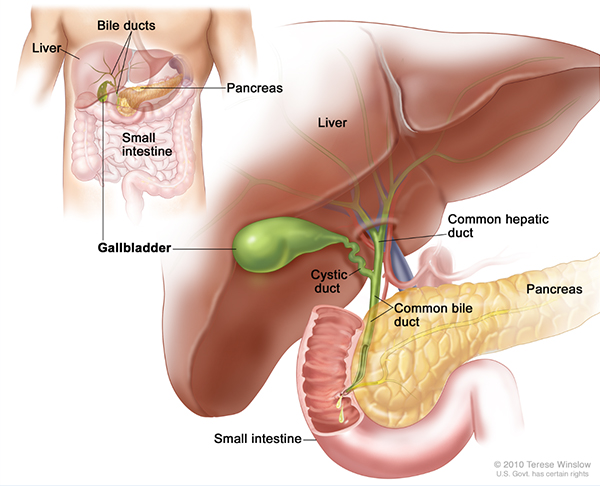What Are Gallbladder Stones?
Gallbladder stones, commonly known as gallstones, are hardened deposits of digestive fluid that form in the gallbladder. The gallbladder stores bile, a fluid that helps digest fats. Sometimes, this bile contains too much cholesterol or waste, which can lead to the formation of stones.

Types of Gallstones
- Cholesterol Stones: Most common; made mostly of cholesterol.
- Pigment Stones: Smaller and darker; made of excess bilirubin (common in liver disease).
Causes and Risk Factors
Gallstones form when:
- Bile contains too much cholesterol
- There is excess bilirubin in the bile
- The gallbladder doesn’t empty properly
Risk factors include:
- Age over 40
- Female gender
- Obesity or rapid weight loss
- High-fat, high-cholesterol diet
- Family history
- Diabetes
- Sedentary lifestyle
Symptoms
Many people with gallstones are asymptomatic. When symptoms occur, they may include:
- Pain in the upper right abdomen
- Pain that radiates to the back or right shoulder
- Nausea and vomiting
- Bloating or indigestion
- Fever and chills if infection develops
Complications
If untreated, gallstones can lead to:
- Cholecystitis (gallbladder inflammation)
- Pancreatitis
- Choledocholithiasis
- Gallbladder rupture (rare)
Diagnosis
Diagnosis typically involves:
- Ultrasound
- CT scan or MRI
- Liver function tests
- Endoscopic ultrasound or MRCP
Treatment Options
- Observation: If asymptomatic, no treatment may be needed.
- Medications: Rare, slow-acting.
- Surgery (Cholecystectomy): Laparoscopic is the gold standard.
- Non-surgical: Endoscopic removal for bile duct stones.
Prevention Tips
- Maintain a healthy weight
- Avoid rapid weight loss
- Eat a balanced, fiber-rich diet
- Exercise regularly
- Stay hydrated
Conclusion
Gallstones are common and often silent. Symptomatic cases require early diagnosis and often surgery. Prevention through diet and lifestyle is key. If you have recurring abdominal pain, consult a Best Gastroenterologist





